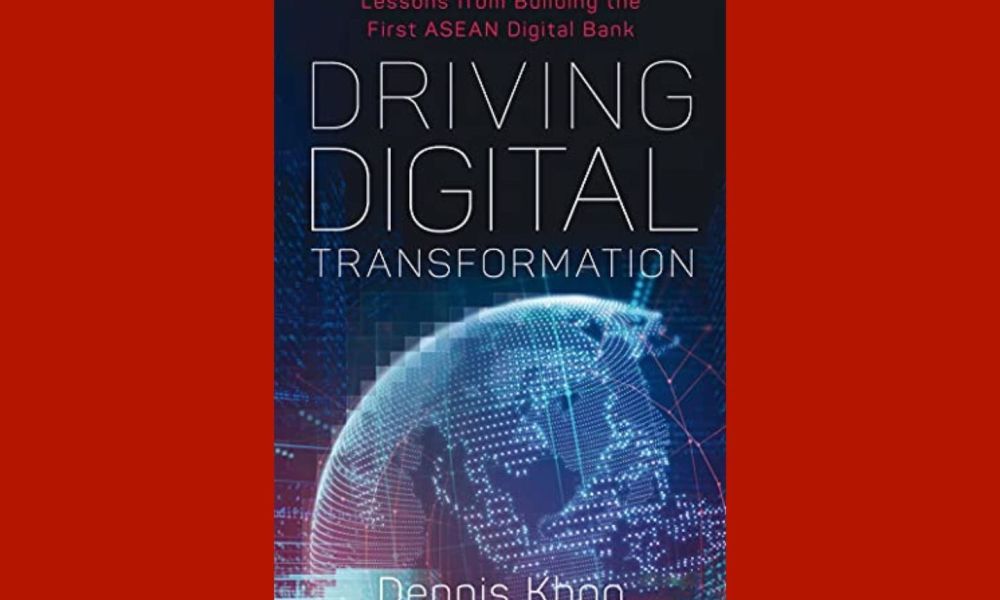
Dennis Khoo was UOB’s point man to develop the Singaporean bank’s pure digital, fully licensed bank offering in Thailand and Indonesia. That new creation was called TMRW and UOB rates it a success.
Khoo has now published a book, “Driving Digital Transformation”, that goes into detail about the building of TMRW, the key decisions the team had to make, and the sequencing and flow of creating a purely online bank from scratch.
The book also includes tips on how others can go about the process, suggesting that there is a proper way to do this. The book implies that TMRW’s way is superior because of the observations and views that Khoo sets out in the book.
For example, he argues that in a small, wealthy market such as Singapore, a digital bank focused on consumers will struggle, so they should focus on serving SMEs (small businesses) instead. In emerging markets with large populations, digital banks should not focus on just consumers or just SMEs, but should do both.
Khoo doesn’t analyze other digital banking efforts, but he lays out his reasoning, so people running consumer-facing virtual banks in, say, Hong Kong can decide for themselves if they’ve got the right strategy.
Many lessons
DigFin covered TMRW over several interviews with Khoo. We captured the essence of what’s in the book. But DigFin recommends anyone in this space should read “Driving Digital Transformation”. It not only lays out the thinking behind TMRW, but goes into detail many aspects that went into making it.
This includes partnerships, design thinking, internal culture, the use of technology for engagement, how industry buzzwords manifest in practice, and more. If there’s a single takeaway from Khoo’s book, it is the sheer complexity of building a digital bank, and he takes pains to include as much as possible. The chapters are brief enough that the book is pretty easy to navigate, although it does feel like some topics get revisited.
This is not a memoir. Although Khoo shares his insights and some decisions, the book is a straight-laced business tome. There are no personalities, no anecdotes. This can make it seem bloodless at times, but the approach has two advantages. First, it gets straight into the meat of things. Second, its impersonal approach gives the book more of a universal feel – again, we are back to its subtext, which is that there are only so many correct ways to build a digital bank, and that TRMW’s lessons are universal.
And maybe this is true. A compelling reason for the book is, as Khoo notes, the vast majority of digital banking initiatives around the world have failed, including high-profile efforts by the likes of J.P. Morgan. Indeed, the only big success stories have been the digital banks connected to gigantic digital platforms such as Alibaba, Tencent and Kakao. For startup banks without such a parent, operating in the smaller markets of Southeast Asia, success must come from someplace else.
Customer experience first
“Rather than just being growth- and product-focused, the bank of tomorrow needs first to be customer- and engagement focused,” he writes, with cashless payments a valuable entry point. Khoo told DigFin that banks are too focused on cross-selling, whereas TMRW would focus on customer engagement and let product sales unfold naturally.
It’s a point he repeats throughout his book, including via a look at how TRMW designed its mobile app. He says this is the blueprint for designing new, purely digital banks: “balancing where you must get the transactional banking basic navigation and usability right and where you must get proactivity right.”
Anyone can now replicate this blueprint, so the competition moves to data-driven insights. This requires a large customer base, so developing customer-facing partnerships is critical. Khoo explains how this strategy drives the need for an agile, cloud-based tech stack, rather than the other way around.
Another point that Khoo repeats throughout the book was his strategy around customer acquisition. In short, although a startup bank needs a lot of customers (to generate the data as well as attract deposits), TMRW decided to focus on active users. Khoo says startup banks should only pay for customers that are signed up, and otherwise keep customer acquisition costs as low as possible.
What matters, he says, isn’t a customer target size, but providing a measurable superior customer experience. Get that right and the rest will follow.
- SEO Powered Content & PR Distribution. Get Amplified Today.
- Platoblockchain. Web3 Metaverse Intelligence. Knowledge Amplified. Access Here.
- Source: https://www.digfingroup.com/tmrw-book/



